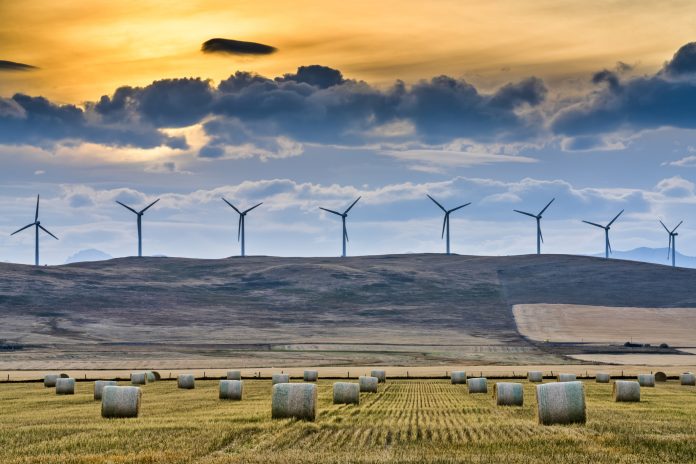Here, the Honourable Lawrence MacAulay, Canada’s Minister of Agriculture and Agri-Food, says free trade and cutting-edge innovation can help Canada’s agriculture sector in a changing climate
Before I ever thought about getting into politics, my wife Frances and I grew seed potatoes and milked cows on Prince Edward Island. Over the years, farming has changed – both in the technology folks are using and the challenges they face, but one thing has not – the sense of pride you feel knowing that you’re growing the food the world wants.
From coast to coast to coast, our nearly 200,000 hard-working Canadian farm families produce an incredible variety of food – from British Columbia blueberries to Prairie grains and pork, to Quebec maple syrup, to Atlantic beef – and so much more. Now, just over a year into my second stint as Canada’s Minister of Agriculture and Agri-Food, I fully understand just how vital trade is to our farm businesses and our economy, and I will continue to promote Canadian products to our international customers at every opportunity.
Canada: A key pillar of food production globally
As a top-five global exporter of safe, top-quality, sustainable agriculture and food products, Canada is a key pillar of food production for the world. We export almost half of our beef production, two-thirds of our pork, about three-quarters of our wheat, and close to all of our canola and pulse crops.
All told, about half of what we produce here, valued at almost $100 billion in 2024, leaves our shores and ends up in grocery stores and on kitchen tables in almost 200 countries around the world. That is an incredible feat, considering that when I first became Minister of Agriculture and Agri-Food in 2015, we were exporting $56 billion and set a goal of $75 billion by 2025.
Productivity and sustainability in Canadian farming
With climate change having an impact on production around the world, strong trade ties are even more vital to global food security. Droughts and floods are becoming more and more common, and when they happen, strong trade networks help people access the food they need.
The good news is that Canadian farmers are world leaders in productivity and sustainability, producing twice as much as they did 50 years ago, benefitting from advanced crop and livestock genetics, zero-tillage, and precision agriculture.
Since forming government in 2015, we’ve invested heavily in research and innovation to help our farmers reduce their carbon footprint even further, with practices such as cover cropping and nutrient management, and technologies like solar energy and energy-efficient grain dryers.
We’ve also built up our trade networks and continue to advocate for rules and science-based trade. We are currently the only G7 country with comprehensive free trade access to the entire G7 and European Union. Our 15 free trade agreements cover 51 countries, almost two-thirds of the world’s GDP and some 1.5 billion consumers worldwide.
North America’s highly integrated food supply chain
Here in North America, our food supply chain is highly integrated. Canada is the largest or second largest agri-food export market for 39 of the 50 states in the U.S., and our Canada-United States-Mexico Agreement drives over half a billion dollars in trilateral agriculture and food trade every day – not to mention millions of jobs across the continent.
A key target market for Canada is the Indo-Pacific Region. Home to more than four billion people, the Indo-Pacific is one of the world’s fastest-growing economic regions, purchasing about a quarter of all Canadian agricultural and agri-food exports. From Korea’s leading grocery chain to breweries in Japan, to meat processors in the Philippines – our products are highly sought after.
Earlier this year, I opened Canada’s first Indo-Pacific Agriculture and Agri-Food office in Manila. A key deliverable under Canada’s Indo-Pacific Strategy, the office will serve as the home base for our mobile team of trade and technical experts from the Canadian Food Inspection Agency and Agriculture and Agri-Food Canada. It will open the door to more opportunities for our farmers, fishers, and food producers, boost the demand for our top-quality food products, and strengthen food security right across the region.
The future of Canadian farming
Looking ahead, trade is an essential part of the future of our agriculture sector, and we need to continue working with our partners around the world to ensure our trade is free and fair.
My top priority is to make sure our producers earn a fair living and have access to the cutting-edge tools they need to grow their production, protect the environment, manage risk, and feed the world. Because I know first-hand that it all starts with the farmer.











